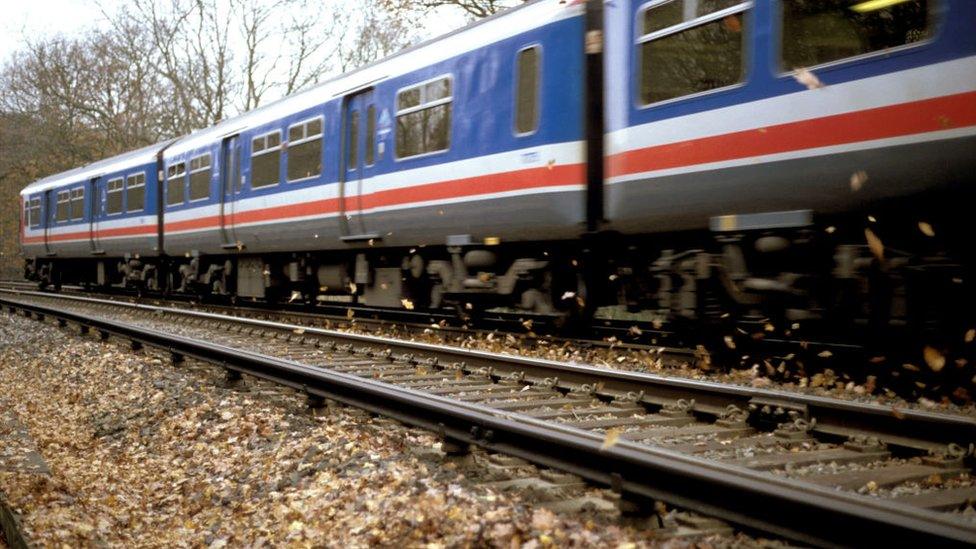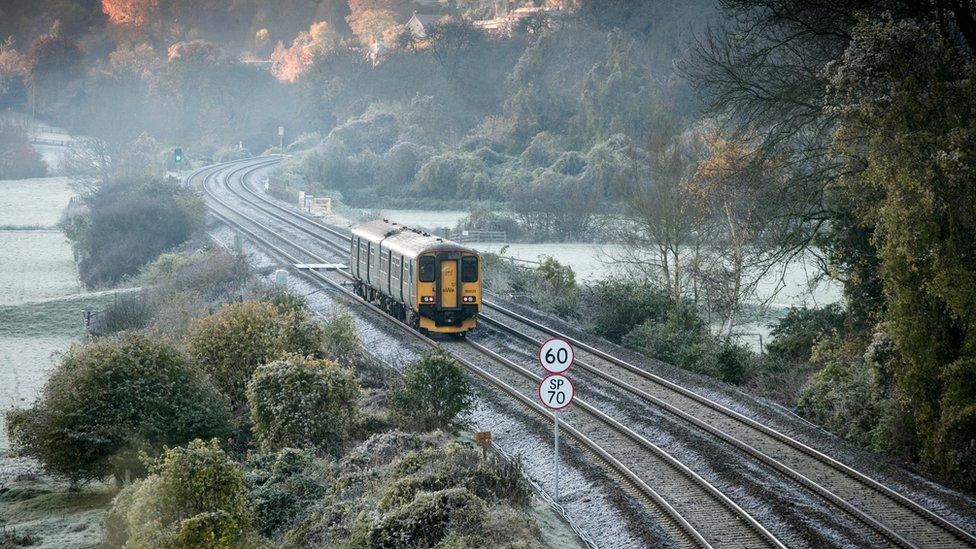New technology to tackle 'leaves on line' train delays
- Published

Leaves on the line is a common low-adhesion hazard preventing trains from running
New technology is being developed to help identify hazards on railway lines such as "leaves on the line" that can prevent trains from running.
So-called low-adhesion hazards on railway lines are estimated to cost the industry £350m a year.
Network Rail said the aim was to develop a system that would capture data from across the network.
The system is being developed by Loughborough and Sheffield universities and engineering firm Perpetuum.
'Black ice'
Engineers said the new software would use sensors located near train wheels to pick up small changes in how the vehicles respond to different track conditions.
This data would be fed into a computer system which will create a real-time map of the kind of biological, chemical or physical factors that cannot be easily monitored or controlled.
Engineers said the map would allow network operators to react quickly to potential risks, meaning services could run more safely and smoothly.
If the testing is successful, the technology could be deployed within five to 10 years.
Loughborough's Dr Chris Ward, who is leading the initiative, said: "The network is in danger of low-adhesion events occurring at all times and the industry takes the impact of these incredibly seriously.
"Network Rail and the wider rail industry invests huge amounts of money in cleaning and forecasting where low-adhesion events may occur - but it's not an exact science and affected areas may only be discovered after an incident has taken place."
He said the new technology would create "a more accurate picture of where hazards lie" on the UK network, which should mean a quicker response from operators and fewer delays.

Low adhesion on railway lines - caused by chemical or biological factors such as leaves - can have a similar effect to black ice, researchers say
Elaine Cockroft, from Network Rail, said: "The future ambition is to add the technology to passenger trains or freight locomotives.
"This would feed into an up-to-date adhesion map of the network."
The 22-month study will see the research team test their algorithms at Network Rail's centre in Tuxford, Nottinghamshire, in the summer.
Professor David Fletcher, from the University of Sheffield, said: "The chemistry of the leaves, rain and the huge pressures create a material that is akin to black ice - very nearly zero friction.
"So, when brakes are applied, vehicles can just slide.
"This means red signals can be passed, station stops missed, and collisions can occur."

Follow BBC East Midlands on Facebook, external, Twitter, external, or Instagram, external. Send your story ideas to eastmidsnews@bbc.co.uk, external.